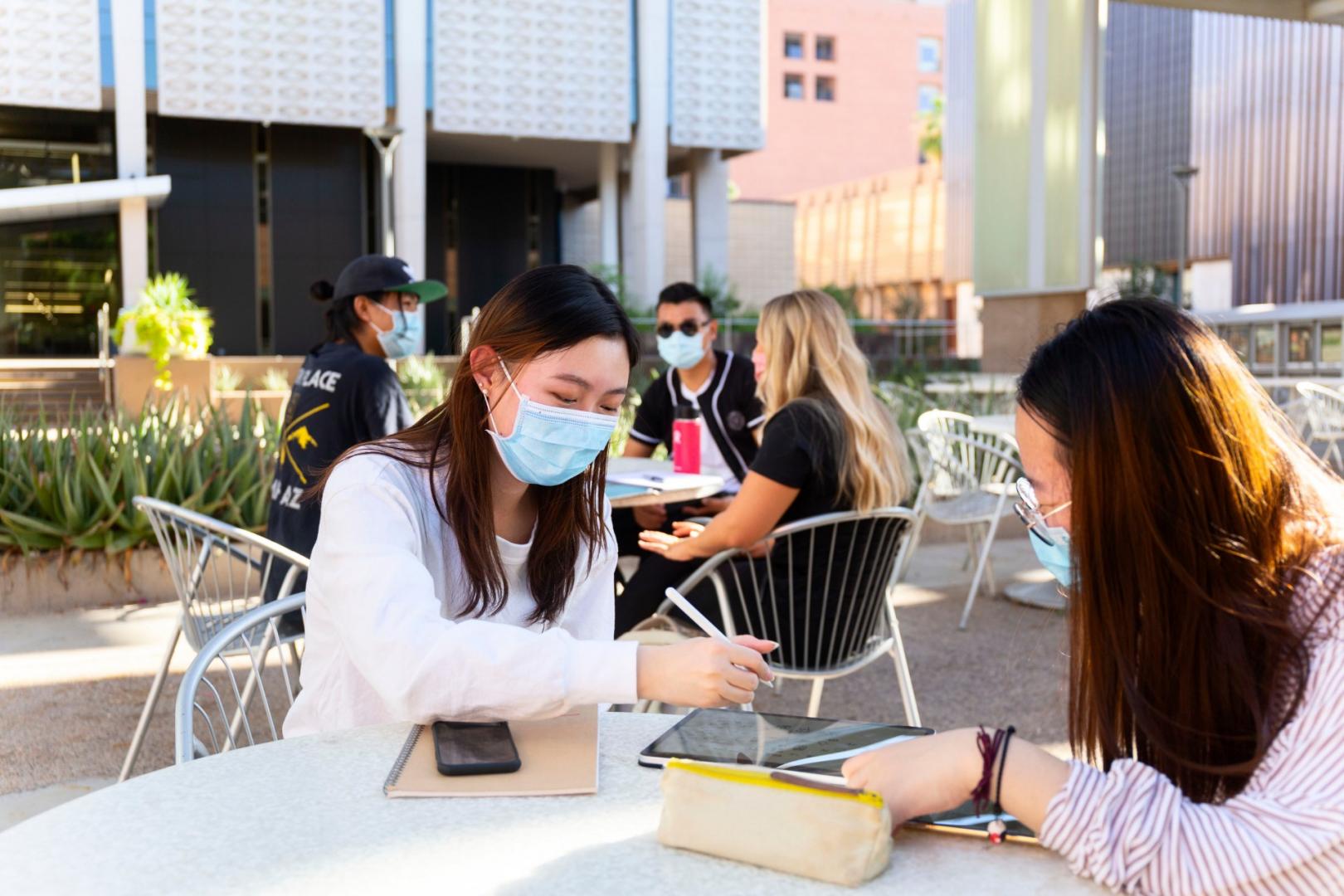Students ‘Sync’ up with instructors on conducting class in hybrid modality

“Do you remember when President Crow said that we should listen to our students, because they can come up with creative solutions? Mine just did.”
Charles Calleros, professor at the Sandra Day O’Connor College of Law, shared this message with fellow ASU faculty and staff after the start of fall semester classes. With ASU Sync becoming our new hybrid modality, blending the synchronous and asynchronous in digital and on-campus immersion settings, the entire ASU community has entered a new realm different from the one spun up in the immediate aftermath of COVID-19 quarantining. And as Calleros explained, some problems arose -- problems that his students came together to solve.
These students and Calleros, who is teaching remotely, found that attendees via Zoom were unable to fully hear the discussion from the number of socially distant students gathered live in a classroom. While new ceiling mics will address the issue soon, the class waded through options together. Passing around a mic for each student to use for the benefit of the students on Zoom, for example, would increase the risk of spreading COVID-19.
“One student, on the fly, came up with the best solution,” Calleros said.
The answer to this puzzle, as the student put forth, was to have everyone in the physical classroom join the Zoom room with their laptop speakers and mics muted. When an in-person student spoke, a staff member in the classroom muted the classroom speakers and that student would unmute themselves. Therefore, students in the classroom and on Zoom could hear their peer’s thoughts without distorted audio feedback.
While ASU and UTO are constantly working to augment classrooms for the best ASU Sync experience, this problem-solving and teamwork from his students led Calleros to say that the semester so far is “working beautifully.” Working with other professors and TAs to spread these ideas was “a nice example of collaborative thinking,” Calleros said.
That collaboration yielded further consideration from Calleros’ colleague at the College of Law, professor Angela Banks. When students would be separated into breakout rooms, the freeform discussion would once again run into issues with multiple groups speaking in the physical space and via Zoom. But to keep conversation flowing, Calleros’ student suggested sorting groups by in-person and Zoom attendance.
“When using random breakout rooms, tell in-class students to accept the invitation and then click on ‘leave room’ -- which will dependably keep them out of the Zoom room,” Banks added, also suggesting the use of a web timer to indicate when the breakout group time is concluded and class is resuming once again.
This technical advice is also representative of a greater awareness of instructor-learner connection, truly demonstrating the power of ASU Sync. Although some issues arose, students connected with their professors to create a better approach for everyone, shaping a more effective learning experience in the process.